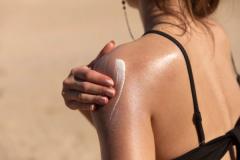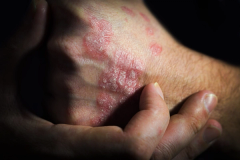
Dr Monica Li Highlights Advances in Microneedling
At the American Academy of Dermatology annual meeting there will be multiple presentations on hot topics and the latest advances in microneedling, explained Monica Li, MD, clinical instructor, Department of Dermatology and Skin Science, University of British Columbia.
This content was produced independently by The American Journal of Managed Care® and is not endorsed by the American Academy of Dermatology.
At the American Academy of Dermatology annual meeting, there will be multiple presentations on hot topics and the latest advances in microneedling, explained Monica Li, MD, clinical instructor, Department of Dermatology and Skin Science, University of British Columbia.
Transcript
What are some of the uses and advances of microneedling being presented at the American Academy of Dermatology annual meeting?
I will be sharing my experiences from Canada, and where I practice, I have a large Asian patient population. I'll be sharing some insights and also a case on using microneedling for Asian patients. I'll be also reviewing some of the more updated literature, especially systematic review results, in addition to the publications Dr. [Tina] Alster and I had coauthored in the past.
Speaker Dr. Omar Ibrahimi is going to be talking about radiofrequency [RF] microneedling and how it compares to microneedling. This is always a hot topic. It's always a question that many clinicians wonder about because both technologies, especially RF microneedling, are very popular these days. And it could influence how clinicians make a decision with bringing these technologies into practice. But he's also talking about micro-coring.
Micro-coring is very new. We have a device now in the US that is FDA approved that makes little basically punch biopsies into the skin to tighten the skin by inducing injury through the dermis. He's going to be exploring that aspect, which is very new, and it's related to the needling strategy.
Dr. Robyn Siperstein is going to be talking about using microneedling for hyperpigmented and hypertrophic scars. Historically, we think of using microneedling for scars that are more dipped into the skin, so atrophic scars, or pitted scars. The reason behind that is because the fibrotic nature of hypertrophic scars are different. So, she's bringing that perspective, because often many clinicians feel that hypertrophic scars can't necessarily be treated by microneedling. So, she's bringing that and sharing that experience.
Finally, we have Dr. Rungsima Wanitphakdeedecha. She's from Thailand, and she's going to be talking about microneedling and the use of needling for transdermal drug delivery. Again, a relatively new area—lots of potential for helping different skin conditions, because we're utilizing the needling technique to serve as a conduit for improving penetration of existing topical medications to exert greater, more augmented effect.
I think all of them bring unique perspectives. These are also kind of hot topics. These are areas that many of us still wonder and want advances in. I think it's hard to pick one [that’s the most interesting]. That's why they're all there.
Newsletter
Stay ahead of policy, cost, and value—subscribe to AJMC for expert insights at the intersection of clinical care and health economics.


































































































